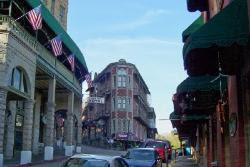Known affectionately as "Old Reliable," Lieutenant General William J. Hardee was a brave and intelligent military officer who served in both the U.S. and Confederate armies.
Born in Camden County, Georgia, in 1815, he graduated from the U.S. Military Academy at West Point in 1838. Commissioned as a lieutenant in the 2nd U.S. Dragoons, Hardee served in Florida during the Second Seminole War until he became seriously ill.
Unlike many who were incapacitated by sickness during that terrible war, he recovered and went on to serve under both Zachary Taylor and Winfield Scott during the Mexican War. He won two field promotions for bravery, suffered a battlefield wound and was taken prisoner and exhanged during that conflict.
After the war, Hardee published his famed Rifle and Light Infantry Tactics, which became one of the most consulted military books for commanders both North and South during the Civil War.
Resigning his commission in January of 1861 following the secession of his home state of Georgia, Hardee eventually rose to the rank of Lieutenant General in the Confederate army. He commanded troops at Shiloh, Perryville and Chattanooga, as well as during the Atlanta Campaign. Left with few men, he bravely tried to stop Sherman's March to the Sea and then achieved the remarkable evacuation of his small army from Savannah under the very eyes of Sherman's much larger command.
To learn more, please visit www.exploresouthernhistory.com/hardeegrave.









.jpg)














